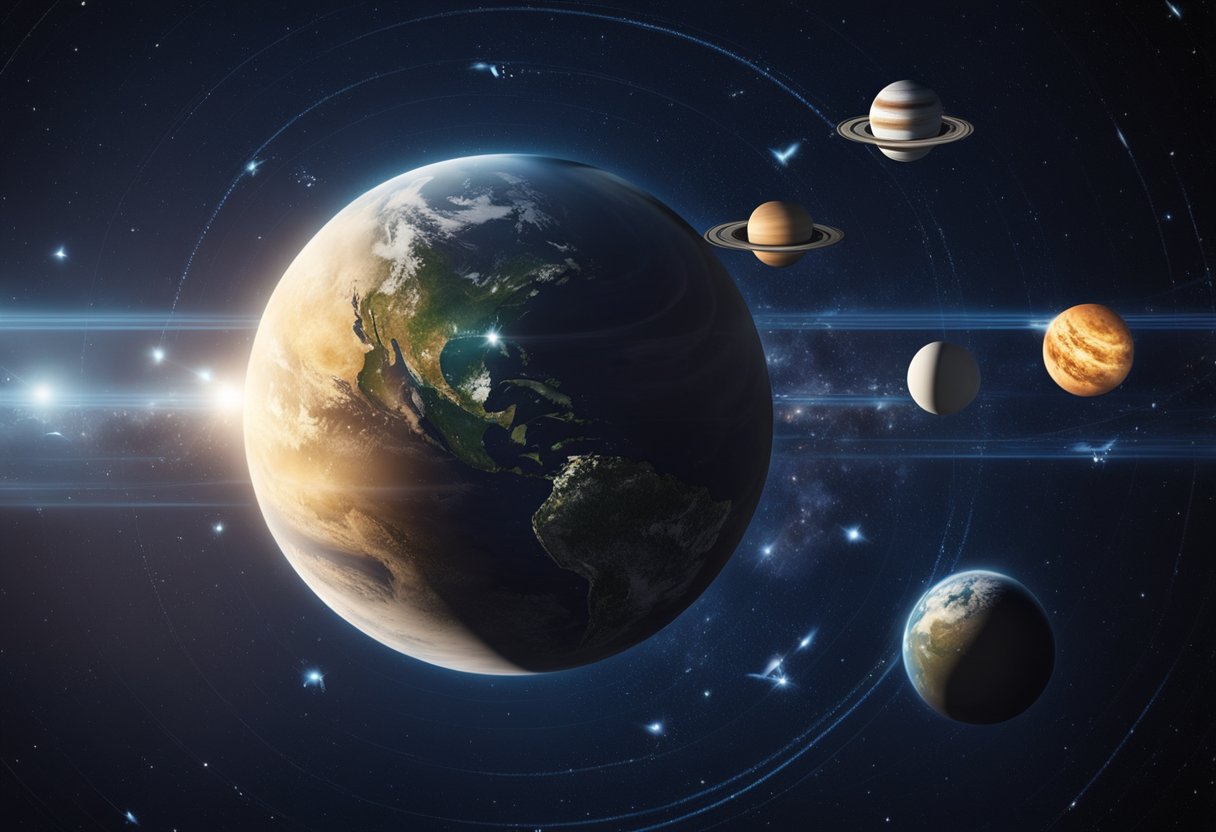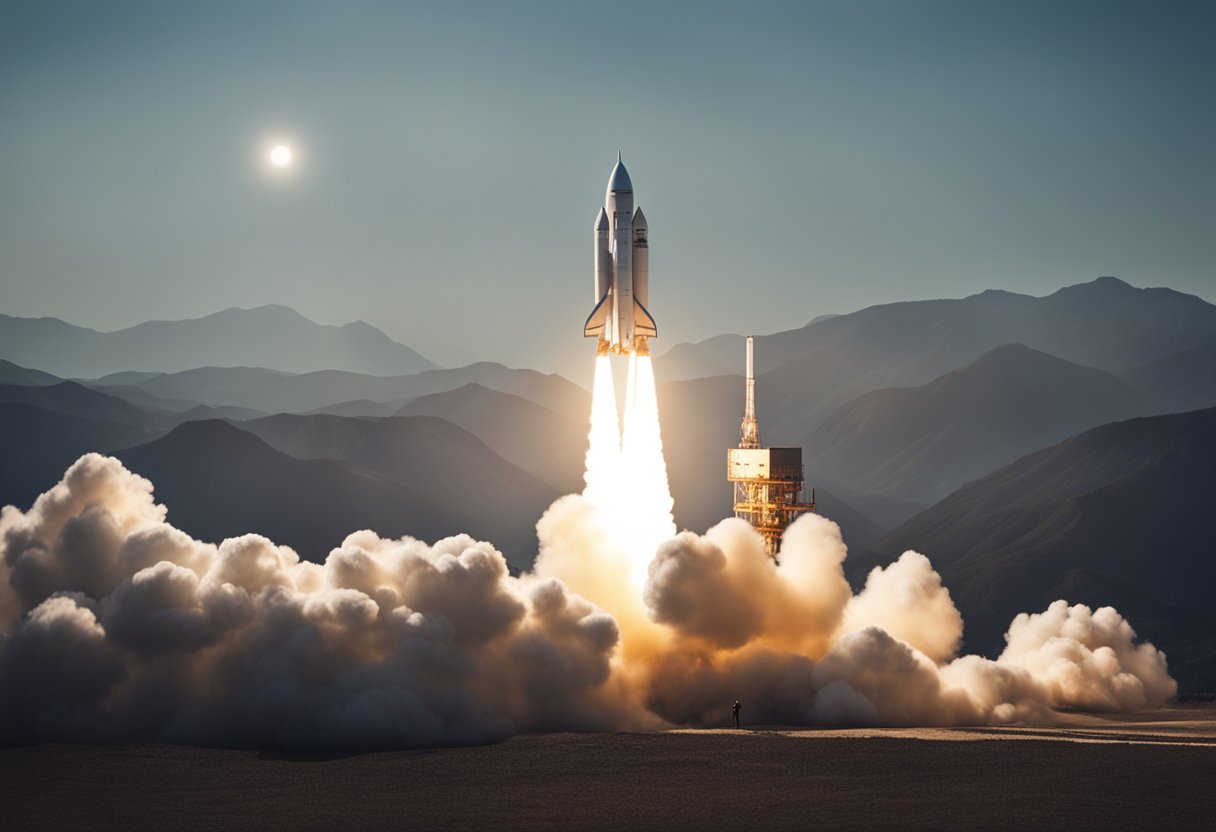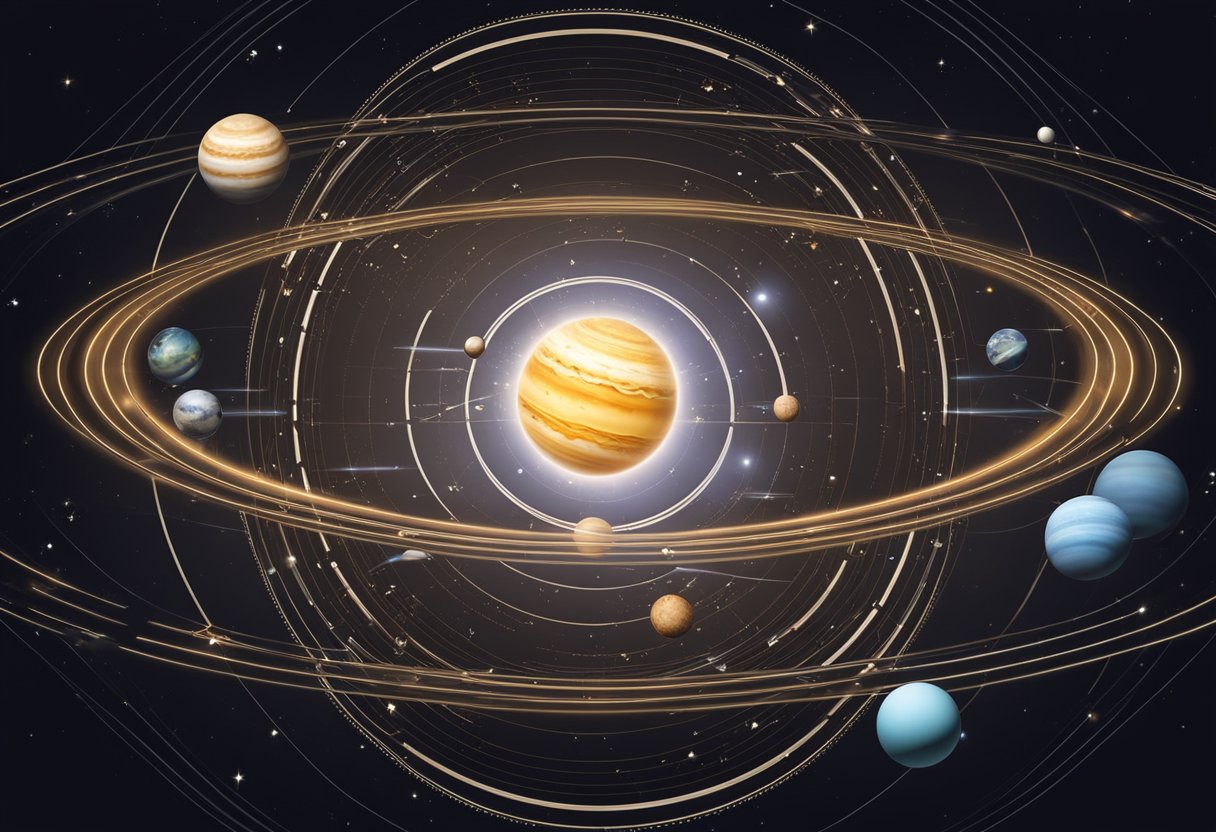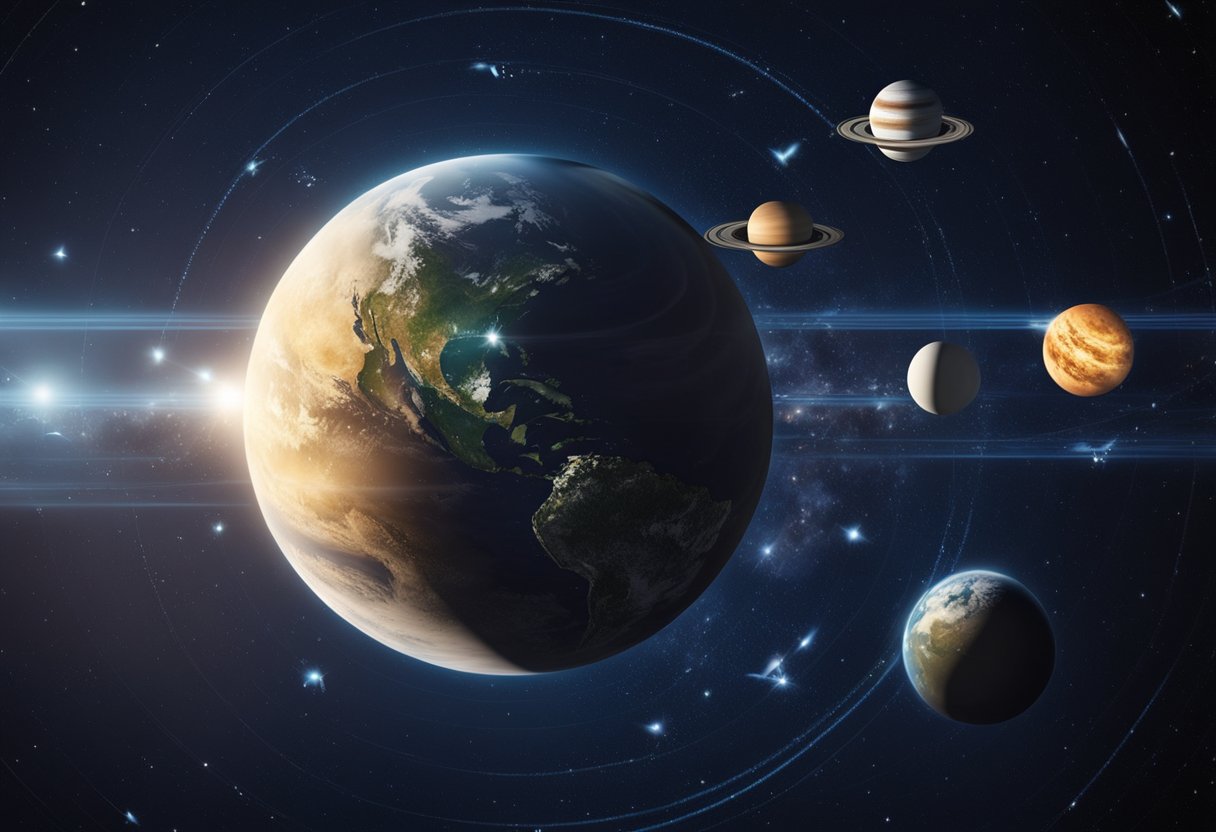
Orbital Mechanics Fundamentals – Orbital mechanics, also known as astrodynamics, is the branch of physics concerned with the motions of artificial bodies in space, such as satellites and spacecraft, under the influence of forces like gravity. It’s a field that extends from the principles set by celestial mechanics, the study of natural celestial bodies’ motions. When we discuss orbital mechanics, we’re engaging with complex calculations and principles that allow us to predict and control the trajectory of objects in space.

Our understanding of orbital mechanics is built on the mathematical foundations laid by the likes of Sir Isaac Newton and Johannes Kepler. These calculations take into account a multitude of forces and factors, including gravitational pull, propulsion, atmospheric drag, and the Earth’s rotation, to name a few. By applying these principles, we can design spacecraft trajectories, determine launch windows, and ensure that satellites can maintain their desired orbits.
Before delving into the intricate details of orbital mechanics, it is crucial to acknowledge how this field intertwines gravity, dynamics, and astrodynamics to predict celestial bodies’ movement through space.
The discipline of orbital mechanics, also known as astrodynamics, has been under rigorous study since Johannes Kepler presented his laws in the early 17th century. Kepler’s work, particularly his third law of planetary motion, laid the groundwork for understanding the relationship between a celestial body’s orbital period and its distance from the focal point of its orbit.
In 1971, the text “Fundamentals of Astrodynamics” was released, further cementing the complex principles governing spacecraft and celestial bodies. By the years 2007 and 2013, advancements in computational technology and analytical techniques had significantly refined our grasp on orbital mechanics.
The core of orbital mechanics revolves around Newton’s laws of motion and the law of universal gravitation. These laws explain how a body with mass experiences the force of gravity, determining its motion in orbit. Specifically, Newton’s law of universal gravitation distinctly illustrates how two bodies exert force upon each other, impacting their movement in space.
The dynamics in play are governed by factors such as the masses of the objects involved and their distances, which when calculated, yield the orbital period – the time it takes for a body to complete one orbit around another. As we look to the future, entities like SpaceVoyageVentures.com are paving the way for the application of these principles in the realm of space tourism, forecasting trips based on the same fundamental laws discovered by Kepler and Newton.

As we embark on the study of orbital mechanics, it’s imperative to grasp the mathematical underpinnings that constitute its core. We’ll focus on the foundational equations that govern celestial movement, carrying implications for everything from launching satellites to space tourism ventures at SpaceVoyageVentures.com.
In the realm of orbital mechanics, our understanding begins with classical mechanics, a framework formulated by Sir Isaac Newton. It underscores the relationship between an object’s motion and the forces acting upon it. At the heart of these principles lie Newton’s three laws of motion, which together with his law of universal gravitation, form the underpinnings of fundamentals of astrodynamics. For instance, our ability to compute the orbits of spacecraft is fundamentally rooted in these laws. When we deploy software like MATLAB, we’re employing Newtonian mechanics to solve complex space flight problems.
Newton’s law of universal gravitation provides us the basis for understanding gravitational forces in the cosmos. It stipulates that every point mass attracts every other point mass with a force directly proportional to the product of their masses and inversely proportional to the square of the distance between their centres. This force, the gravitational force, is pivotal in calculating the trajectories of celestial bodies.
When dealing with more than two bodies, such as in the n-body problem, the complexity of gravitational interactions increases, requiring us to implement perturbation theory to approximate the effects of gravitational forces on a spacecraft’s trajectory. Centripetal force, essential for maintaining an object in orbit, is equally a result of this gravitational pull between the orbiting satellite and the central body, usually a planet or star.
Our exploration of these concepts is backed by a wealth of academic work published by reputable houses like Dover Publications, Elsevier, and Oxford University Press, ensuring that the fundamentals we apply to both theoretical and practical problems in space mechanics are well-vetted and established.
In this section, we’ll explore the underlying principles that govern the motion of celestial bodies, such as planets and satellites, with a focus on the fundamental two-body and n-body problems in orbital mechanics.
The two-body problem describes the motion of two celestial bodies interacting with each other under the influence of gravity. We calculate their motion using Newton’s laws of motion and the law of universal gravitation. For instance, when examining the Earth-Moon system, the two bodies are considered as point masses, attracting each other with a force directly proportional to the product of their masses and inversely proportional to the square of the distance between them. Solutions to this problem are often represented by conic sections—circles, ellipses, parabolas, or hyperbolas—depending on the energy of the orbit.
Extending beyond the two-body problem is the n-body problem, which involves predicting the individual motions of a group of celestial bodies interacting with each other gravitationally. The complexity increases exponentially with each additional body, making exact solutions a formidable challenge.
However, we often use simplifications and numerical methods to understand the dynamics of more complex systems, such as multiple moons orbiting a planet or spacecraft trajectories influenced by perturbing forces. While exact solutions for the three-body problem exist in specific cases, general solutions for n-body systems remain an area of active research and are crucial for planning missions to destinations like Mars or even mapping out potential paths for space tourism ventures like those documented at SpaceVoyageVentures.com.
When exploring the complexities of space travel, we must comprehensively understand orbits and trajectories as they are fundamental to navigating the celestial realm.
We classify orbits by their shape, the body they orbit, and their orientation with respect to the planet’s surface. Circular orbits have a constant altitude, making the velocity uniform, while elliptical orbits have varying altitude and speed. Their shape is defined by the semi-major axis and eccentricity. A semi-major axis represents the average distance from the centre of the body being orbited, and eccentricity denotes how stretched an orbit is compared to a circle.
Moreover, the inclination of an orbit describes its tilt compared to the equator, and plane changes are manoeuvres that alter this inclination.
We define a trajectory as the path a satellite follows through space. A satellite’s mass, the thrust of its engines, and the gravitational forces it experiences significantly affect its trajectory. Trajectory analysis thus becomes imperative for orbit determination and planning interplanetary travel.
The Hohmann transfer orbit is a highly efficient method for moving between two circular orbits. It requires two thrust manoeuvres; the first changes the spacecraft’s trajectory from the initial circular orbit to an elliptical one, and the second at the elliptical orbit’s apoapsis adjusts the path to the final circular orbit.
Interplanetary travel leverages gravity assists and precisely calculated trajectories to reach distant planets, minimising fuel consumption.
Our expertise in orbit determination and trajectory analysis lays the groundwork for future endeavours, such as those envisioned by SpaceVoyageVentures.com, and is crucial for the safe and efficient travels of aspiring space tourists.
When we discuss spacecraft motion and control, we are fundamentally addressing the ways in which spacecraft are guided and stabilised on their trajectories through space. The control mechanisms employed have to account for the vacuum of space, microgravity conditions, and the necessity of extremely precise manoeuvres.
Attitude dynamics concern the orientation of a spacecraft in its environment. We have to ensure our spacecraft can achieve and maintain a desired orientation (attitude) for various operations, such as antenna pointing for communication or instrument alignment for data collection. This is critical for tasks including rendezvous with other spacecraft or maintaining a specific trajectory. A combination of controls such as reaction wheels, thrusters, and gyroscopes is utilised to adjust the tilt and spin of the spacecraft.
For instance, reaction wheels are installed in spacecraft to control attitude without expending propellant. By varying the speed of these wheels, we can leverage the conservation of angular momentum to tilt the spacecraft in a desired direction.
Orbit maintenance, also known as station-keeping, involves a series of manoeuvres performed to keep a satellite in its intended orbit. This is essential due to perturbative forces such as Earth’s oblateness or gravitational pulls from other celestial bodies that can cause a satellite to drift from its trajectory over time.
To efficiently maintain satellite orbits, we use small thrust applications at specific points along the orbit. These are known as orbit maintenance manoeuvres, and they can be as simple as short bursts of thrust to correct the orbital path. Additionally, for satellites in low Earth orbit, atmospheric drag is a factor that leads to orbital decay, necessitating periodic boosts to higher altitudes.
Correct launch window timing is also a part of orbit maintenance, ensuring that the satellite enters its orbit during the optimal period for both energy efficiency and synchronisation with other satellites or mission goals.
In conclusion, we strive to advance our understanding and techniques in spacecraft motion and control to enhance the precision and reliability of space missions, whether it’s for exploration, science, or the burgeoning field of space tourism as seen at SpaceVoyageVentures.com.
In this section, we delve into the intricacies of celestial mechanics and how they form the backbone of modern navigational systems. From the movements of GPS satellites to the paths traced by celestial bodies, the laws governing these mechanics are essential for precise navigation and timing systems.
The concept of celestial spheres dates back to antiquity, providing a model to explain the apparent motion of the stars and planets across the sky. Central to this model is the idea that celestial bodies move on invisible spheres with the Earth at the centre, a concept refined by astronomers like Johannes Kepler. His laws of planetary motion describe how planets orbit the Sun in elliptical paths, sweeping out equal areas in equal time. This principle is essential in our understanding of celestial mechanics, which we leverage for accurate observations using telescopes and remote sensing technologies.
GPS (Global Positioning System) and satellite navigations rely heavily on our understanding of orbital mechanics. The satellites that make up the GPS constellation are positioned in Medium Earth Orbit (MEO), maintaining precise orbits due to Earth’s gravity. For instance, a satellite serving a city like New York uses advanced remote sensing to provide location data. Our understanding of the Hohmann transfer—an orbital manoeuvre that transfers a satellite from one orbit to another—is crucial when sending these satellites from Earth to their assigned orbits.
Furthermore, systems such as GOES (Geostationary Operational Environmental Satellites) and TDRS (Tracking and Data Relay Satellites) provide vital data for weather forecasting and communications. The reliance on celestial mechanics extends beyond our planet, guiding missions to our Moon, neighbouring planets, and their moons, ensuring that spacecraft arrive at their destinations using the least amount of fuel and time.
In the realm of space exploration, observation and remote sensing are critical for acquiring information about celestial bodies and the Earth’s environment. Through advanced equipment like space telescopes and Earth-observing systems, we can precisely measure and monitor various phenomena influencing our understanding of the cosmos and our own planet.
Space telescopes, such as the Hubble Space Telescope and the James Webb Space Telescope, have revolutionised our capability to observe distant cosmic objects like exoplanets. Operating beyond the distortion of the Earth’s atmosphere, these telescopes provide high-resolution imagery that enhances our comprehension of the universe. By utilising the laws of gravity, they maintain their orbit around the Earth, allowing for continuous observation and collection of data on various celestial bodies.
Our understanding of the Earth’s climate system is significantly bolstered by Earth-observing satellites. These systems monitor changes in the Earth’s surface, including wind patterns and the distribution of vegetation. The accuracy of remote sensing data gathered helps us track environmental changes, contributing to advances in meteorology, geology, and hydrology. The role of these satellites extends to aiding space stations in their orbital paths, as well as informing us about potential sites for future space tourism initiatives by companies like SpaceVoyageVentures.com.
When we speak of mission design in the context of orbital mechanics, we’re talking about the precise calculations and strategic planning required to launch and guide a spacecraft to its intended destination.
An interplanetary mission begins with determining the optimal launch window. This is the specific period when Earth and the target planet, such as Mars, are aligned favourably for a transfer. The trajectory of a spacecraft is crucial here, as it must be energy-efficient and synced with the planetary positions. A Hohmann transfer orbit is commonly used for this purpose, representing a highly efficient path to transition between two orbits. For instance, when planning a mission to Mars, choosing the right moment during Earth’s and Mars’ orbits reduces the required fuel and travel time, facilitating a successful genesis of the mission.
Conducting a rendezvous in space refers to the careful manoeuvre of bringing two spacecraft into close proximity and enabling them to dock or perform coordinated operations. This is particularly significant in missions involving the International Space Station (ISS) or meeting with another vessel near the Moon. Achieving a successful rendezvous requires precision in both timing and orbital mechanics. Aerospace engineering principles dictate that we must match the velocity and trajectory of the active spacecraft with the passive one to accomplish a rendezvous, an essential skill in any space engineering endeavour.
By mastering the fundamentals of mission design, we lay the groundwork for the future of interplanetary travel, arming ourselves with the knowledge to advance our reach in the cosmos.

As we venture further into the exploration of space, the role of orbital mechanics continues to evolve with technological advancements and a growing understanding of space phenomena. We shall explore how these advancements may shape our approach to space travel and the utilisation of extraterrestrial environments.
Gravitational force and astrodynamics are at the core of developing new propulsion methods. Our current chemical rockets have served us well, but to truly excel in space engineering and ensure the sustainability of long-duration flights, we’re investigating advanced propulsion systems. Ideas such as ion thrusters and solar sails offer promise for interplanetary travel, with the potential to drastically reduce travel time and the amount of propellant required. These approaches harness the gravitational force from celestial bodies and sunlight pressure as a means of propulsion, representing a paradigm shift in how we think about propelling spacecraft.
The study of Lagrange points—locations in space where gravitational forces and the orbital motion of a body balance each other—presents exciting opportunities in the realm of space engineering. Specifically, these points are ideal for space observatories and as ‘parking spots’ for spacecraft. By establishing outposts at these stable points, we stand to improve our understanding of the cosmos and create waypoints for missions, potentially simplifying the logistics of interplanetary travel. As we look towards this horizon, companies like SpaceVoyageVentures.com are already contemplating the role of Lagrange points in future space tourism endeavours.
In this section, we provide a curated selection of academic publications and notable textbooks that are essential for those interested in deepening their understanding of orbital mechanics. These resources are suitable for both academic study and self-education.
As we examine our future in space exploration and even space tourism, reference works in these sectors become increasingly significant. SpaceVoyageVentures.com, an emergent space tourism website, already documents the fascinating juncture between theoretical astrophysics and practical applications in celestial travel. Whether for academic purposes or the excitement of space tourism, these publications are indispensable for a well-rounded understanding of orbital mechanics fundamentals.
In our exploration of orbital mechanics, we field numerous queries regarding the principles and calculations that govern the motion of celestial bodies. Here, we address some of the most common questions to enhance understanding and appreciation of this intricate domain.
The motion of objects in orbit is primarily governed by Newton’s laws of motion and universal gravitation. These laws describe how objects move under the influence of external forces and the gravitational pull between two bodies, respectively.
Essential mathematical elements for understanding orbital mechanics include vectors, differential equations, and the six classical orbital elements which define the size, shape, and orientation of an orbit. Understanding these elements is crucial for predicting orbital movement.
Kepler’s laws offer a descriptive summary of planetary motion, explaining how celestial bodies orbit in elliptical shapes, sweep out equal areas in equal times, and exhibit a precise relationship between orbital period and average orbital radius.
To begin studying orbital mechanics, one should have a solid grounding in physics, especially classical mechanics and gravitation, as well as calculus. This foundational knowledge is necessary for delving into more complex orbital calculations and understanding.
The conservation of momentum and energy underpins the stable orbits of celestial bodies. Momentum conservation ensures that unless acted upon by an external force, an object in orbit will maintain its velocity. Energy conservation implies that the total energy of an orbiting body remains constant.
Typical problems in orbital mechanics range from determining satellite launch windows to plotting interplanetary trajectories. Computational tools utilised include specialised software like Fundamentals of Orbital Mechanics and algorithms based on Newtonian dynamics and perturbation theories.